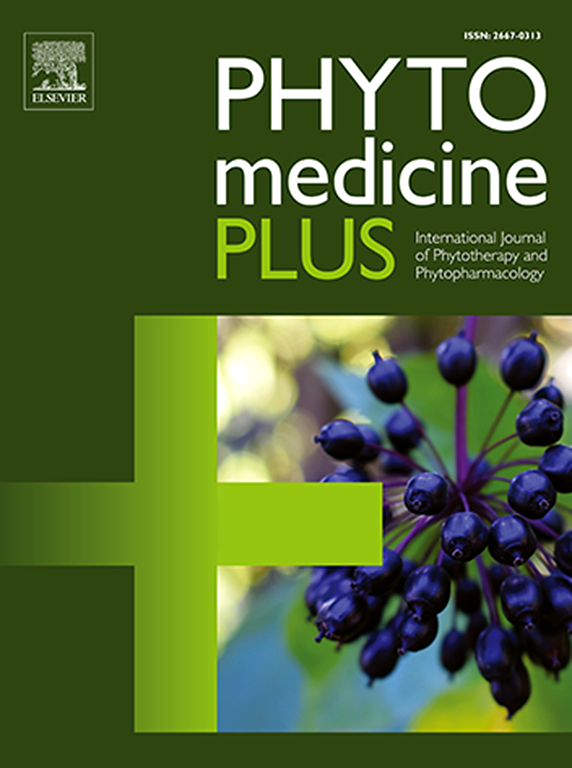大蒜(Allium sativum L.)在哮喘免疫病理生物学新模型中的治疗潜力综述
Q3 Pharmacology, Toxicology and Pharmaceutics
引用次数: 0
摘要
哮喘是一种常见的慢性免疫介导的呼吸系统疾病,长期以来一直是全球关注的健康问题。在这种情况下,大蒜(Allium sativum L.)调节哮喘免疫病理生物学的潜力引起了极大的兴趣。然而,在新兴哮喘病理生物学模型的背景下,大蒜的分子和免疫介导作用仍未得到充分探讨。本文旨在探讨大蒜(Allium sativum L.)对哮喘新模型免疫病理生物学的潜在影响,为临床前和临床研究提供指导和综合参考资料。材料与方法在PubMed、Medline Scopus和谷歌Scholar上进行综合文献综述。对每个关键字进行组合搜索,其中“大蒜”作为主要关键字或搜索词。如果文章主要关注大蒜化合物对哮喘免疫病理生物学的影响,则纳入。结果s-烯丙基半胱氨酸巯基半胱氨酸(SAC)通过特异性下调TH2细胞因子抑制哮喘炎症事件。它还减少了重要的关键促炎介质,包括IL-6、PGE2和COX2,这些介质在哮喘发病过程中至关重要。大蒜(Allium sativum L.)化合物通过调节NF-κB/ i -κB表达进一步抑制炎症反应。此外,硫化合物通过抑制哮喘炎症反应抑制NLRP3炎性体的激活。结论大蒜(Allium sativum L.)化合物,包括SAC,可能具有多种生物学功能,包括对TH2炎症和其他免疫调节和抗氧化特性的特异性作用,以对抗特异性免疫介导的哮喘病理生物学途径。本文章由计算机程序翻译,如有差异,请以英文原文为准。

Therapeutic potential of Garlic (Allium sativum L.) on new models of asthma immune pathobiology: A review
Background
Asthma, a prevalent chronic immune-mediated respiratory disease, has long been a global health concern. In this context, the potential of garlic (Allium sativum L.) to modulate the immune pathobiology of asthma is of great interest. However, the molecular and immune-mediated effects of garlic remain inadequately explored in the context of emerging asthma pathobiological models.
Aims of the study
This review aims to explore the potential effects of garlic (Allium sativum L.) on the immune pathobiology of new asthma models and to provide guidance and comprehensive reference material for preclinical and clinical studies.
Materials and methods
A comprehensive literature review was conducted in PubMed, Medline Scopus, and Google Scholar. A combined search was performed for each keyword, with “garlic” included as the primary keyword or search term. Articles were included if they primarily focused on the effects of garlic compounds on the immune pathobiology of asthma.
Results
The administration of s-allyl-cysteine mercapto-l-cysteine (SAC) suppresses inflammatory events in asthma by specifically downregulating TH2 cytokines. It also reduces vital key proinflammatory mediators, including IL-6, PGE2, and COX2, which are vital in asthma pathogenesis. Garlic (Allium sativum L.) compounds further suppress inflammatory response via modulation of NF-κB/IκB expression. Additionally, sulphur compounds inhibit the activation of NLRP3 inflammasome, via the suppression of asthmatic inflammatory response.
Conclusion
The garlic (Allium sativum L.) compounds, including SAC, potentially show multiple biological functions, including specific effects on TH2 inflammation and other immune-modulatory and antioxidant properties against specific immune-mediated asthma pathobiological pathways.
求助全文
通过发布文献求助,成功后即可免费获取论文全文。
去求助
来源期刊

Phytomedicine Plus
Medicine-Complementary and Alternative Medicine
CiteScore
3.70
自引率
0.00%
发文量
178
审稿时长
81 days
期刊介绍:
 求助内容:
求助内容: 应助结果提醒方式:
应助结果提醒方式:


